Book Signing with Alice Waters and Drawings by Patricia Curtan


We took all of these images and snippets and staticky things and put them together in one sheet. And then we went from there to doing individual plates and then putting them together and then separating. Back and forth.
When you’re alone in the studio, you have to make your decisions, for better or for worse. Here, when there are people who can give you feedback, I find myself in a bit of a fog, but not in a bad fog—in a very, very good fog.
No. I have negative assistants. I have resistance. I’m just in my studio wandering around.
Yes.
Yes. I could paint on this. And I tried drawing some. This paper drives me crazy with happiness. I want like my whole life to be this.
Whose idea was it to print on cloth?
I wanted to print on cloth because I do a lot of embroidery stuff. And I thought, okay, it’s cloth, and then we’ll draw, and maybe try some embroidery. But the embroidery that I’ve tried feels unnecessary.
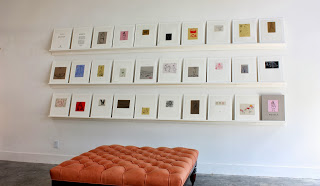
For me that’s part of the process—that we went to a nearby fabric store and saw what they had—and they had wonderful things.
Can you talk about some of these images you brought with you to use for reference?
This is an airplane. It’s like the early airplanes.
Like Kitty Hawk?
Exactly, but it may be upside down. I’m not sure. And this was a dancer from New York. I cut out a lot of photographs, so this is a woman that performed a few years ago. Half the time I don’t know where I cut out the images from anymore, but she’s a dancer, and this is also a dance troupe. So the movements of people making it through the day, both intentionally as dancers, and then just how we move around really fascinates me a lot. There’s a man behind her in the photo, holding his hands on her shoulders. But she’s a little bit awkward.
I’m always watching how people are walking, and following them and photographing how people walk and really struggle—a lot of yearning to be okay, and dignity, and being brave. Basically I think everybody’s very brave for getting up in the morning and continuing through the day. Sometimes people walking, people sitting and eating, are just heartbreaking. I love Diane Arbus when she went to visit the people in the home and the Halloween images of those people. That’s also a Lartigue, but the photo is of a woman looking up at this ball, and then it became something else. It became a woman holding a stick. And then there is the rollercoaster after Hurricane Sandy.
I’m always drawing into the plate, either the hard ground or the sugar lift. It only took me four days to remember those four words—hard ground, sugar lift.
It’s like a nice poem.
Yes. I think that the problem is, putting the word “poetry” on it—it depends what kind of mood you’re in: poetry can be a wonderful thing to say about something, and then, as a critic once said about me, “unnecessarily poetic.”
Yes. I don’t want to forget the idea of a sense of humor along with the yearning and the sadness. There’s a lightness balancing the heaviness. And so poetry would imply one thing, and then just saying “I don’t know” would be the other.
No. But a lot of the things that I write or things in the books are poems. The dog says, okay, I’m going to write a poem now. I’m going to close my eyes and think of three things and then make a poem out of that. So there’s a lot of poetry and there’s a lot of songwriting in the children’s books. But I am collaborating with Gertrude Stein [in the set designs for the Mark Morris Dance Group’s production of Stein’s opera Four Saints in Three Acts]. So yes, I’m collaborating with a poet whom I never met.
I hope that if she were alive she’d go, “Great,” as opposed to, “Don’t you dare.”
I found a copy of the book one summer and thought, “Oh my God, this is a crazy great book, and I need to illustrate it.” It’s the randomness of each sentence. The continuity comes from [Strunk and White’s] wit and the vivid cinematic images that they use. You don’t have to worry about a plot.
Of course I want to come back some time in the future when it all makes sense. I’ll go home and I’ll be able to moan and go, ugh, what was I thinking, or what was I not thinking? Really, it’s the beginning of a conversation.
I’ve been to Berkeley some other times, and I spent time in San Francisco installing the show at SFMOMA [about her late husband Tibor Kalman]. And then I came here to this gallery, and I said, “This is an amazing space. I love being here.”
Well, I walk from my bed-and-breakfast in the morning. It’s over a mile. But that’s also the graph of the day—that sometimes you’re just sitting there like a stunned animal, not knowing what’s going on. We are animals that sort of freeze, and then—well I guess it’s like a possum, but a possum plays dead for something else. But I feel like sometimes I’m an animal that all of a sudden is dead. And then all of a sudden I come back to life.
One of the things I did in Rome was go watch people pray, because I was trying to say, “What exactly are you doing? What are you doing on your knees? What do you think is going to happen here?” The intensity of people publically displaying their emotions and their grief and their hope, it’s incredible. Plus in Naples there were a lot of places where people are in confession and the priest is just sitting up, kneeling opposite them, not in a little contained cubicle, just open.
The thing is that if you’re in the formal construct of a church or a synagogue and you’re praying to a deity, as opposed to praying for the strength to deal with whatever tragedy might befall you, and you are looking for a deity to save you, that feels delusional. I say “Oh my god” a thousand times a day. Then I say, “But I don’t believe in God.” And i am really not sure which statement is true.

I met Erik Heywood a little over a year ago, soon after he launched his website Book/Shop. The website offers seasonal reading lists, library furniture and fittings, art, books, and delicious chocolate.
I was struck immediately by Erik’s passion for literature and books and his exquisite eye for design. His extensive knowledge of books and obscure publications provides a refreshing break from the culture of “insta-knowledge” and onscreen reading. Erik studied English but soon left school to sell antique furniture. He worked briefly making props for Martha Stewart, then pursued both interior design and retail branding.
In March, Erik took the keys to a quaint, 250-square-foot space in the thriving Temescal neighborhood in Oakland and set up the brick -and-mortar Book/Shop. In addition to acquiring books, he is amassing and designing several lines of merchandise related to reading: beautifully handcrafted canvas book bags detailed with fine Japanese leather, small portable bookshelves made from a variety of beautiful woods, (we bought five for the press and some for home too!), stackable bookshelf components, modernist furniture, art, and lighting.

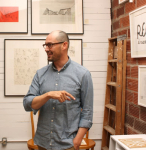
Erik’s enthusiasm about our gallery program spurred us to collaborate. He is currently featuring five of our new Maira Kalman prints on the north wall of Book/Shop, and he has invited Maira Kalman to curate a pop-up bookshelf at the press in late September. (We will keep you posted about the date.) I hope you take the time to visit Erik’s shop. His attention to fine detail is truly extraordinary.
BOOK/SHOP 482D 49th Street, Oakland, CA, 94709. Tues.-Sat. 12-5. 510-907-9649
I can remember years ago, when I first interviewed for the position at Paulson Bott, my friend and former colleague, Sherry Apostol encouraged me by stating, “What a great place, Rhea. You have got to work for them; they work with Martin Puryear!”
Before I had met Martin in person, another colleague compared the experience of his company with that of being in the presence of the Dali Lama. When I met Martin in 2002, I realized that she was right. His grace is remarkable. In his company, one knows they are in the presence of greatness. Martin is very soft spoken, but when he speaks, people listen.

We also listen to his art– the vibrations, the emotions released from his sculptures.
They speak of the natural world, the human spirit and world history. They nod at, bow to and break down our notions of the object. Like Martin, they are quiet, magical and sublime.
Martin employs wood, mesh, stone and metal to create forms that resist identification. They evoke the future and the past, both forging ahead and leaning back. They excite and provoke and comfort.

It is my greatest pleasure as Gallery Director at Paulson Bott, to introduce his work to those who have yet to discover it. I often resist my temptation to scream, “What? You don’t know who Martin Puryear is?!” “Haven’t you heard, the critic Robert Hughes has only declared him to be ‘America’s Best Artist’!”
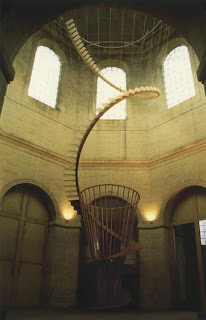
Martin’s first comprehensive show in the California bay area was in 2001 at the Berkeley Art Museum. Sadly, it’s opening day was September 11th and many missed the exhibit for obvious reasons. Slight redemption took place in the fall of 2008 when his retrospective,Martin Puryear, traveled to the SFMOMA. It was an exciting chance for the bay to experience his impressive oeuvre. I remember speaking with a friend who had just seen the show, and she stated, “I’ve always admired the images I’ve seen of his work but standing next to the sculpture in person literally gave me goose bumps.”
After the opening, the SFMOMA hosted a spectacular dinner at the St. Regis to honor Martin. Neal Benezra spoke to the group and expressed how fortunate we all were to be sharing such a momentous occasion with an artist of his caliber. It is indeed our privilege at Paulson Bott Press to engage with an artist that we know will mark our time and leave a lasting legacy in the art world and beyond.
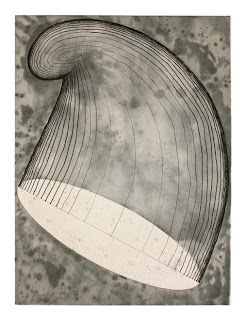
I applaud the Supreme Court’s decision to strike down the Defense of Marriage Act. This was discrimination enshrined in law. It treated loving, committed gay and lesbian couples as a separate and lesser class of people. The Supreme Court has righted that wrong, and our country is better off for it. We are a people who declared that we are all created equal—and the love we commit to one another must be equal as well.
—Barack Obama
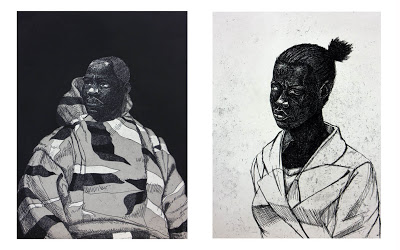
Wednesday’s ruling is a step forward for civil rights and civil liberties. The Supreme Court struck down the Defense of Marriage Act (DOMA) as unconstitutional, in contrast to Tuesday’s ruling, which took voting rights a step backward. We have come a long way on many fronts, but we still have a long way to go towards real equality.
Kerry James Marshall has focused his career on achieving real equality in the art world. “In the Tower: Kerry James Marshall” goes on display Friday at the National Gallery of Art‘s Tower Gallery and is Marshall’s first solo exhibition in Washington, D.C. This is the first time that the National Gallery has curated and exhibited the work of a living African-American artist.
In a conversation with NGA curator James Meyer, published recently in the Huffington Post, Marshall describes the importance of the show:
When you walk through the museum you don’t have a sense that the variety of different people who made up the nation as a whole have many any real meaningful contributions to the development of this country in the ways that people talk about its greatness. And I think to finally start to bring into a place like the National Gallery somebody who does work like mine that is not always celebratory of American ideals, that has an ambivalent and at times critical relationship to the overall story, to finally start to allow that work to be seen and those narratives to be articulated, starts to fulfill the promises that the idea of the country and the founding documents set out to guide us.
Today, 50 years after the civil rights movement’s heyday, we are at a tipping point. I hope today’s DOMA ruling and Marshall’s exhibition at the National Gallery of Art indicate that we are tipping in the right direction.
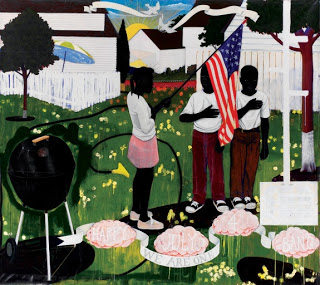
For an additional perspective on Marshall’s exhibition, please read Tyler Green’s article here:
http://blogs.artinfo.com/modernartnotes/